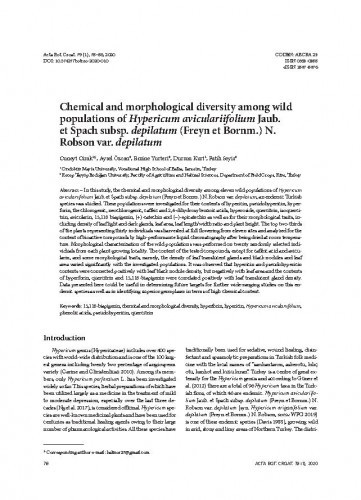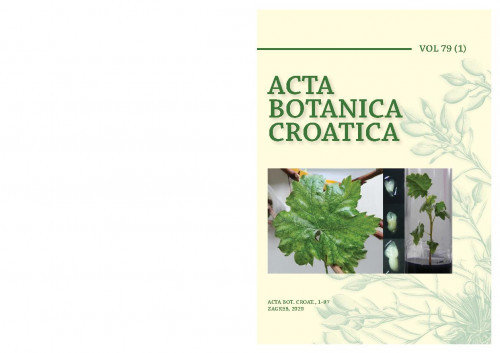In this study, the chemical and morphological diversity among eleven wild populations of Hypericum aviculariifolium Jaub. et Spach subsp. depilatum (Freyn et Bornm.) N. Robson var. depilatum, an endemic Turkish species was studied. These populations were investigated for their contents of hypericin, pseudohypericin, hyperforin, the chlorogenic, neochlorogenic, caffeic and 2,4-dihydroxybenzoic acids, hyperoside, quercitrin, isoquercitrin, avicularin, 13,118 biapigenin, (+)-catechin and (-)-epicatechin as well as for their morphological traits, including density of leaf light and dark glands, leaf area, leaf length/width ratio and plant height. The top two-thirds of the plants representing thirty individuals was harvested at full flowering from eleven sites and analyzed for the content of bioactive compounds by high-performance liquid chromatography after being dried at room temperature. Morphological characterization of the wild populations was performed on twenty randomly selected individuals from each plant-growing locality. The content of the tested compounds, except for caffeic acid and avicularin, and some morphological traits, namely, the density of leaf translucent glands and black nodules and leaf area varied significantly with the investigated populations. It was observed that hypericin and pseudohypericin contents were connected positively with leaf black nodule density, but negatively with leaf area and the contents of hyperforin, quercitrin and 13,118-biapigenin were correlated positively with leaf translucent gland density. Data presented here could be useful in determining future targets for further wide-ranging studies on this endemic species as well as in identifying superior germplasm in terms of high chemical content.
Sažetak

 Acta botanica Croatica : 79,1(2020) / editor-in-chief Nenad Jasprica.
Acta botanica Croatica : 79,1(2020) / editor-in-chief Nenad Jasprica.